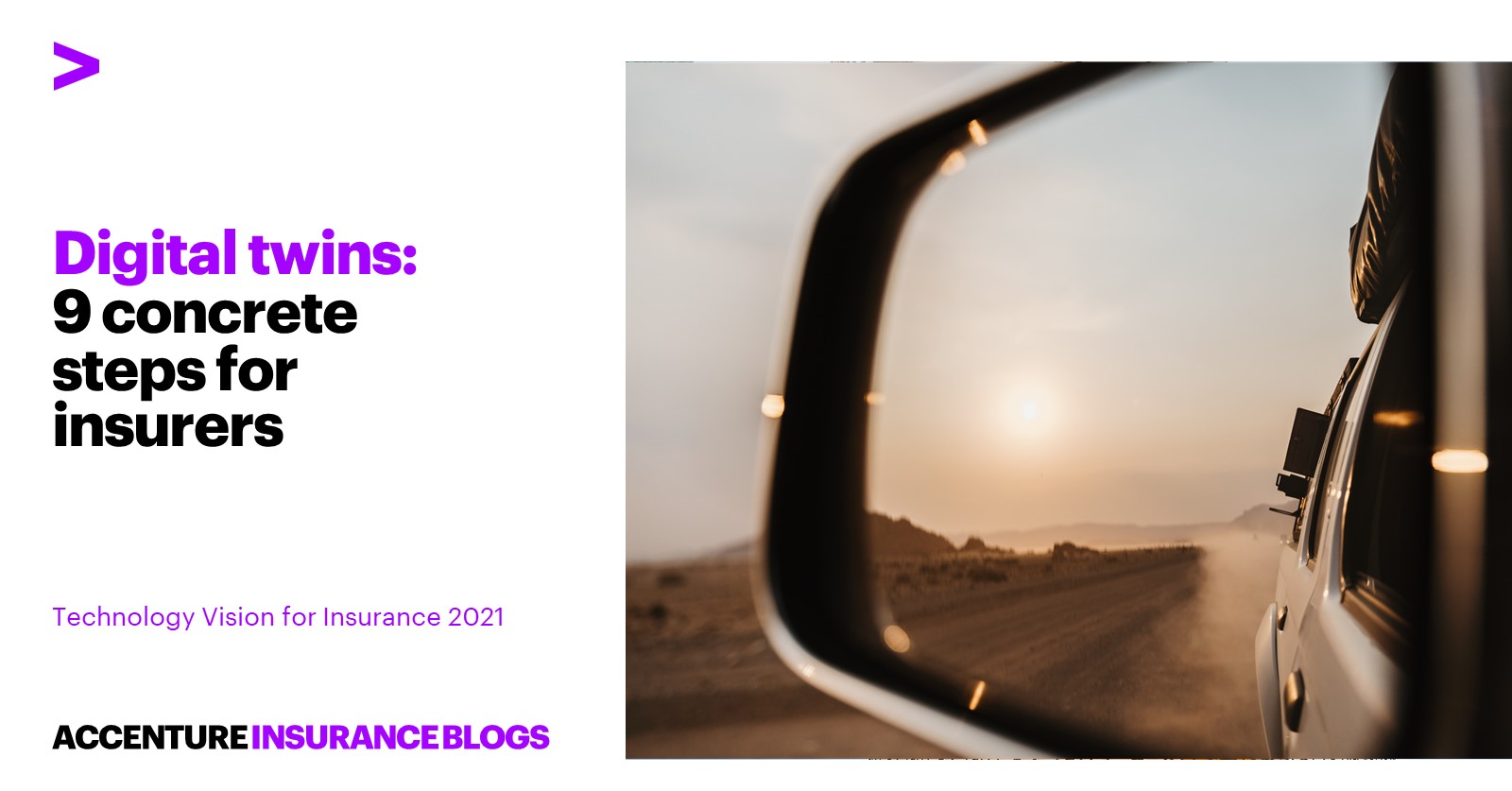How insurers can put intelligent digital twins to work

In the previous posts in this series, we’ve looked at what digital twins are, why insurers have been slow to adopt them and four areas where I see opportunities for digital twins to have a big impact. For insurers that recognize the potential value of digital twins, I suggest the following steps to get started.
1. Audit your data practices. Evaluate which tools and technologies your business is using and where data is being warehoused so you can deconstruct data silos. If you haven’t yet begun your cloud journey, now is the time to start moving your data, and possible applications, to the cloud.
2. Prioritize the building of streaming analytics capabilities. Digital twins need a healthy data “supply chain” to be effective. Consider embedding sensors in physical products and spaces, and investing in solutions that deliver rapid ingestion, preparation and analysis of the data generated. Your commercial clients are probably already doing this for themselves for their own reasons (such as worker safety and efficiency). So, the question is, how do you “plug into” that data supply chain?
3. Develop a list of key use cases. Think about where digital twins will generate the most impact in your enterprise.
4. Reimagine product development cycles. Can you visualize how product development would look with digital twins at the center? Also, think about how product and pricing development practices would need to change, given new payloads of data arriving at a greater frequency.
5. Integrate intelligence capabilities with digital twin efforts. Pilot generative (iterative) design or synthetic data solutions to explore how they could enhance your design, testing and product development.
6. Design twins to be connected across the business or ecosystem. Make API strategy a priority when developing digital twins. This means evaluating and including external (or open) sources of data, as well as constructing an API for the digital twin itself.
7. Lead digital twin strategies with ecosystem-scale thinking. Plan for large systems as the long-term goal. The amount of data available is only going to increase from here, so limited systems will barely provide a short-term stopgap.
8. Target digital twins. Think entire offices, supply chains and more. Use individual twins to gain greater visibility into larger collaborations and combine them wherever possible.
9. Short-list potential digital twin-driven partnerships. This could be collaboratively building a new twin or tapping into an already established network of digital twins.
Technology Vision for Insurance 2021 – We outline five emerging technology trends that will impact the insurance industry in 2021 and beyond.
LEARN MORE
The real value, as I see it, is in stitching the digital twins together. That’s no easy task, so it’ll mean some serious planning and a solid roadmap to implement an overarching digital twin infrastructure. But insurers that seize the opportunity will see their businesses evolve and grow. They’ll be in a better position to collaborate with ecosystem partners, innovate with new products and offerings, and gain a more nuanced understanding of risk and thus be able to price products more appropriately.
If you’d like to explore the opportunities presented by digital twins, feel free to reach out to me directly. We can help map your journey and ensure you select the right tools and ecosystem partners to maximize your investments.
To learn more about the technology trends expected to impact insurers, read our report: Technology Vision for Insurance 2021
Get the latest blogs delivered straight to your inbox.







